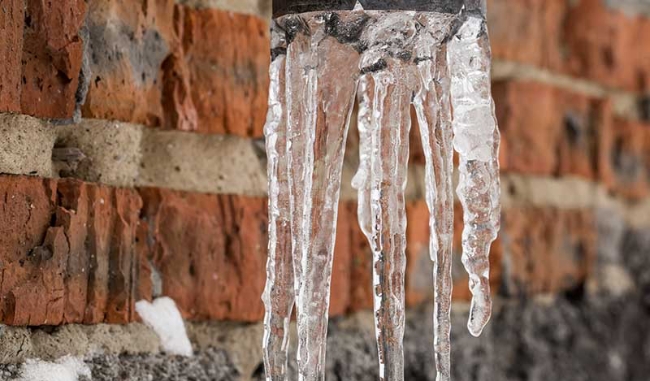Were you trying to find help and advice about How to Prevent Your Pipes From Freezing?

Cold weather can damage your plumbing, especially by freezing pipelines. Right here's exactly how to avoid it from happening and what to do if it does.
Intro
As temperature levels decrease, the danger of icy pipes rises, possibly leading to pricey repair work and water damages. Understanding how to prevent frozen pipes is crucial for home owners in chilly environments.
Understanding Icy Pipelines
What triggers pipes to freeze?
Pipelines ice up when exposed to temperatures below 32 ° F (0 ° C) for expanded periods. As water inside the pipelines ices up, it broadens, taxing the pipeline wall surfaces and potentially creating them to break.
Threats and damages
Icy pipes can result in water supply disruptions, property damage, and costly fixings. Ruptured pipes can flood homes and create comprehensive structural damage.
Indications of Frozen Piping
Recognizing frozen pipes early can avoid them from bursting.
Exactly how to identify icy pipelines
Try to find reduced water flow from taps, unusual odors or sounds from pipes, and visible frost on revealed pipelines.
Prevention Tips
Protecting at risk pipes
Wrap pipes in insulation sleeves or use warm tape to secure them from freezing temperatures. Focus on pipelines in unheated or exterior areas of the home.
Heating techniques
Maintain interior rooms adequately heated up, especially areas with plumbing. Open up cupboard doors to permit warm air to circulate around pipelines under sinks.
Safeguarding Outdoor Pipes
Yard tubes and exterior faucets
Separate and drain pipes yard hose pipes before winter. Set up frost-proof faucets or cover exterior taps with shielded caps.
What to Do If Your Pipelines Freeze
Immediate activities to take
If you presume icy pipes, maintain taps available to soothe pressure as the ice melts. Use a hairdryer or towels taken in warm water to thaw pipes gradually.
Long-Term Solutions
Structural modifications
Take into consideration rerouting pipes away from outside wall surfaces or unheated locations. Add extra insulation to attic rooms, cellars, and crawl spaces.
Updating insulation
Invest in high-grade insulation for pipelines, attic rooms, and wall surfaces. Appropriate insulation aids maintain regular temperatures and decreases the threat of icy pipes.
Verdict
Protecting against frozen pipes needs aggressive measures and fast feedbacks. By understanding the causes, indications, and preventive measures, homeowners can safeguard their pipes throughout winter.
6 Proven Ways to Prevent Frozen Pipes and Protect Your Home
Disconnect and Drain Garden Hoses
Before winter arrives, start by disconnecting your garden hoses and draining any remaining water. Close the shut-off valves that supply outdoor hose bibs and leave the outdoor faucet open to allow any residual water to drain. For extra protection, consider using faucet covers throughout the colder months. It’s also important to drain water from any sprinkler supply lines following the manufacturer’s directions.
Insulate Exposed Pipes
Insulating your pipes is an effective way to prevent freezing. Pipe insulation is readily available at home improvement stores and is relatively inexpensive. Pay close attention to pipes in unheated areas such as the attic, basement, crawl spaces, or garage. Apply foam insulation generously to create a buffer against the cold. You can also wrap your pipes in heat tape or thermostat-controlled heat cables for added warmth.
Seal Air Leaks
Inspect your home for any cracks or openings that could let in cold air. Seal any holes around the piping in interior or exterior walls, as well as the sill plates where your home rests on its foundation. Additionally, make sure to keep your garage door closed unless you’re entering or exiting. Leaving it open creates a significant air leak that can lead to frozen pipes.
Allow Warm Air Circulation
During cold snaps, it’s essential to allow warm air to circulate evenly throughout your home. Leave interior doors ajar to promote better airflow. Open kitchen and bathroom cabinets to help distribute heat consistently around the rooms. If you have small children or pets, be sure to remove any household chemicals or potentially harmful cleaners from open cabinets for safety.
Let Faucets Drip
A small trickle of water can make a big difference in preventing ice formation inside your pipes. When temperatures drop significantly, start a drip of water from all faucets served by exposed pipes. This continuous flow helps prevent the water from freezing. Additionally, running a few faucets slightly can relieve pressure inside the pipes, reducing the chances of a rupture if the water inside does freeze.
https://choateshvac.com/6-proven-ways-to-prevent-frozen-pipes-and-protect-your-home/

I ran across that blog post on Winter Plumbing Precautions: Preventing Frozen Pipes when doing a search on the web. If you liked our post kindly consider to share it. Thanks for being here. Return soon.
At This Website